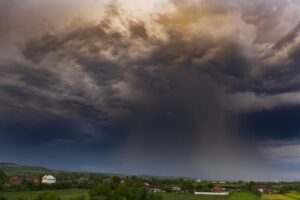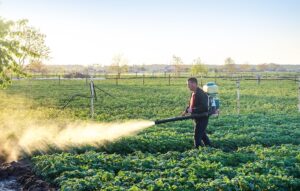Would You Like Some Plastic with That Salad?
We used to worry about plastic in the ocean. Then it showed up in fish. Then bottled water. Then bloodstreams, breastmilk, rain, and lungs. But now — it’s sprouting up from the ground. Literally.
Your lettuce? Could have plastic inside it.
Your carrots? Same.
The wheat that makes your bread? Contaminated.
Plastic isn’t just polluting nature anymore — it’s becoming part of nature.
How Does Plastic Even Get into Plants?
It sounds like a sci-fi headline: “Nanoplastics Detected in Crops.” But it’s real. And it’s happening now.
Contaminated Soil Is the Gateway
Plastics don’t vanish. They just break down — into pieces so small, we can’t see them. These microplastics (less than 5 mm) and nanoplastics (less than 100 nanometers) often end up in soil via:
- Plastic mulch used in conventional farming
- Sewage sludge applied as fertilizer
- Irrigation water contaminated with waste
- Breakdown of litter and degraded packaging
- Tire dust and atmospheric fallout
Once plastics settle into the ground, it’s only a matter of time before plants encounter them.
Absorbed Through the Roots
Roots are smart. They’re selective. But they’re not immune.
Research shows that nanoplastics are small enough to penetrate plant root tissue, slipping past biological barriers and entering the plant’s internal transport system — the xylem — which moves water and nutrients upward.
This means plastic particles can travel from root to stem, to leaf, and even to fruit or grain.
Yes, This Is Happening — And We Have the Science
Let’s look at a few real examples — not just headlines.
- A 2020 study from Wageningen University in the Netherlands found nanoplastics in the root tissues of lettuce and wheat, after exposing them to contaminated water.
- A 2021 study from the Chinese Academy of Sciences discovered microplastics in rice crops grown in soil treated with plastic-rich compost and sewage sludge.
- Researchers in Environmental Science & Technology noted that plastic-contaminated soil could result in bioaccumulation of nanoplastics in crops, especially those grown in heavily farmed or urban-adjacent regions.
This isn’t theory. It’s detection. Plastics are in the food supply — and they’re entering at the root.
What Happens When Plants Absorb Plastic?
Unfortunately, it’s not just a “trace amount” kind of issue. Even at low concentrations, microplastics can affect plant biology.
Growth Disruption
- Reduced germination rates have been observed in seeds grown in plastic-laced soil.
- Stunted root systems and weakened shoot development make plants more vulnerable to disease and drought.
- Plastics interfere with nutrient uptake, water absorption, and photosynthesis.
Basically, plastics make it harder for plants to thrive.
Plastic in Edible Plant Parts
Perhaps most concerning: plastics don’t always stay in the roots.
They’ve been found in:
- Lettuce leaves
- Wheat grains
- Carrot tissues
- Rice kernels
This means the produce that looks fresh and local could carry invisible contaminants from the soil it grew in.
And because these are nano-scale, there’s no way to wash them off.
The Silent Contamination of the Food Chain
Let’s zoom out.
Contaminated crops don’t just affect human eaters — they affect the entire food web.
- Livestock fed contaminated grains absorb plastics through their gut lining.
- Compost made from food scraps reintroduces microplastics into garden soil.
- Rainfall and dust redistribute plastic particles onto plants growing in open air.
It becomes a cycle — a closed loop of pollution. Except it’s not just plastic circulating. It’s health impacts, environmental stress, and long-term unknowns.
What This Says About the Modern Food System
We’ve spent decades refining how to grow more food, faster. But somewhere in that pursuit, we forgot to protect what nourishment actually means.
Plastic has become so embedded in our lives that we’re not just surrounded by it — we’re made of it. And now? So is our food.
This isn’t an abstract warning. It’s a sign we’ve crossed a line.
One where:
- Plastic is more common in topsoil than earthworms
- Food labeled “natural” may contain synthetic fragments
- The planet is digesting what we threw away — and spitting it back into our mouths
Final Thoughts
Once upon a time, we pulled roots from clean earth and made soup.
Now?
The carrots carry chemical tags. The lettuce crunches for the wrong reasons. And the bread rises with invisible baggage.
We said plastic lasts forever. We didn’t expect it to take root.
But it has. And now it grows with us.









Reader Interactions